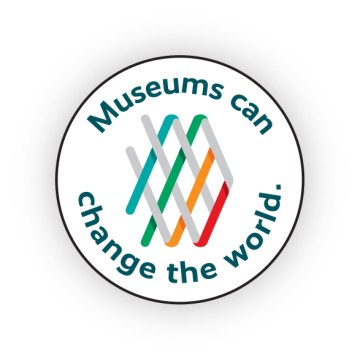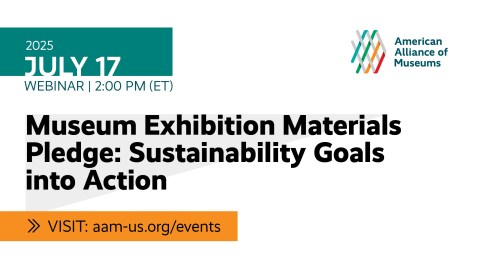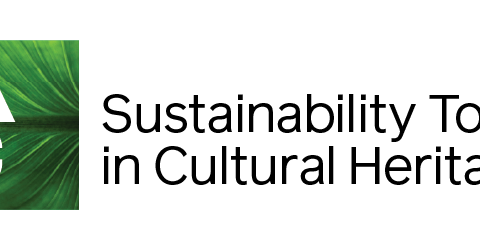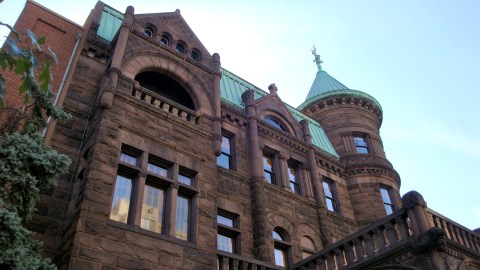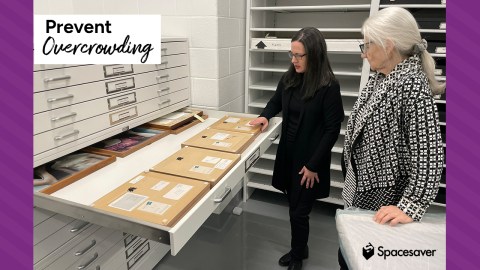
Over the past few weeks, I’ve been studying a variety of forecasts to prepare for the coming year. The most useful sources are people whose views on a given topic are informed by experience, training, and data, saying “I think this is likely to happen, for the following reasons.” Projections like this can affirm the assumptions underlying your current plans, or disrupt your expectations, prompting you to revisit and revise your strategies. Experts may disagree, particularly on complex issues, and that’s useful as well. The range of opinions expressed in expert forecasts can remind you of the wisdom of making plans, plural: both a mainstream plan built around what is likely, though flexible and adaptive enough to cope with variations, and contingency plans for potential disruptions.
Here’s a summary of projections on some issues important to museums, organized by the STEEP foresight categories (Social/Cultural, Technology, Economy, Ecology/Environmental, Politics/Policy). I encourage you to use this briefing as a jumping off point for discussions with colleagues, staff, board, and planning teams about what to expect in the year ahead.
Social/cultural
A tight labor market and workplace discontent
As of November, unemployment in the US was 4.2 percent—slightly above the post-pandemic low but still functionally considered to be full employment. This “hard” job market gives workers considerable flexibility in choosing what jobs to take, and when to leave.
National data gives some indication of how this freedom may play out. A recent Glassdoor poll of professionals show that almost two-thirds feel “stuck” in their current roles and satisfaction with career opportunities is falling. According to an October survey by ResumeTempates.com, over half of workers are looking for a new job in 2025, a third plan to quit even if they don’t have a new job lined up, and one-fifth plan to change fields. Gallup estimates that the cost of replacing lost staff ranges from 40 percent of salary for frontline positions to 200 percent for leaders and managers. Add to that the loss of institutional knowledge and memory, as well as the chilling effects on project timelines, and it’s clear that high turnover can cripple an organization’s budget and operations.
Numerous studies agree on what people value in a job, notably work-life balance, job security, growth opportunities, and flexible policies. According to some researchers, the most important factor in employee satisfaction is recognition, making people feel like they matter. While pay and benefits are important, other factors play important roles in decisions to stay or leave. The biggest issues driving workers to quit are burnout, feeling underappreciated, and inflexible policies about when and where work gets done. In particular, return to work policies are provoking a backlash, with many workers unwilling to pay the costs, in money and time, of commuting when being on-site is not clearly relevant to their work.
AAM’s 2024 Annual Snapshot of US Museums revealed that 47 percent of museums continue to have trouble filling open positions. Given the forecasts cited above, these challenges are likely to persist in 2025.
Museums might:
- Study the research on what employers can do to make staff feel valued and supported.
- Implement regular surveys of their staff and make a commitment to addressing the most important concerns. (Note that, without follow through, conducting a survey can be worse than doing nothing at all.)
- Provide career development opportunities for all staff. A broad, inclusive approach might, for example, create opportunities to participate in other departments and learn new skills.
- Create equitable, meaningful recognition programs.
- Establish flexible work policies that accommodate the needs of a wide variety of employees. Such policies may also give the museum access to a broad pool of talent, including people with disabilities, disadvantaged by traditional employment practices.
- Consider the role hybrid or remote work may play in your organization and assess how it might improve jobs that can be done offsite by saving staff time, and money. Note that not all employees prefer remote work (research suggests that younger workers, in particular, may value the opportunity for direct contact with their manager and colleagues).
Technology
Disruptions in social media
Many pundits foresee seismic shifts in the realm of social media. X (formerly Twitter) steadily lost users over the last year, an exodus that spiked after the election. Some analysts believe that use of the platform will continue to decline in 2025, driven in part by the company’s decision to gut its content moderation and the concomitant rise in hate speech, disinformation, and AI generated content. TikTok will be banned in the US unless a) parent company ByteDance complies with a legislative requirement to sell the app by Jan 19, b) the Supreme Court agrees to review that legislation, or c) the incoming president intervenes. Facebook usage seems to be stable, but its parent company, Meta, has made clear that its priorities lie in artificial intelligence and augmented reality. That may affect the care and attention devoted to supporting the platform, going forward. All the major platforms may be impacted by rising public concerns over the well-documented negative effects of social media on children. In addition, there are a growing number of legislative efforts at the state and federal level to address these concerns by requiring companies to impose age restrictions, and improve content moderation, or face significant fines.
Much of the dissatisfaction with the existing mainstream platforms arise from the way their business models have led them to clog users’ feeds with ads and promotions, making them less like social networks and more like paid content delivery mechanisms. In response, we are seeing the rise of non-commercial, open-source sites such as Bluesky Social and Mastodon. It remains to be seen whether these alternatives can provide the reach needed for effective public communications or for professional community building.
Museums might:
- Review their social media policies, assess their dependence on each platform they use, and evaluate the potential risk from any given platform shuttering, changing in ways that make it a bad match for the museum’s reputation and target audience, or changing policies in ways that make it less useful for the museum.
- Evaluate their performance metrics, and identify ways to assess not just reach, but also the outcomes of such engagement.
- Identify when key changes in these metrics would trigger actions, for example, posting more or different content, or leaving platforms that are no longer a good match for the museum’s goals and values.
- Experiment with emerging platforms, to assess their potential to supplement or replace existing platforms in the organization’s suite.
Economic
Insurance
Climate risk is disrupting the insurance industry at an accelerating pace. A 2024 Senate committee investigation on insurance nonrenewal found that in 200 counties, the rate at which insurance companies dropped policies has tripled or more since 2018. As a recent article in the New York Times points out, the consequences could be profound: “Without insurance, you can’t get a mortgage; without a mortgage, most Americans can’t buy a home. Communities that are deemed too dangerous to insure face the risk of falling property values, which means less tax revenue for schools, police and other basic services.”
As we saw during the pandemic, lower local tax revenues affect museums as well, both in terms of direct support, and erosion of basic services on which they rely. In addition to the impact on their communities, climate risk, whether from flood, storm, or wildfire, may increasingly affect the cost of insurance for museums, or, for some institutions in high-risk areas, their ability to find coverage at all.
Museums might:
- Use FEMA’s National Risk Index to check the levels of risk from natural hazards for their county. This agency’s interactive map provides information on expected annual loss, social vulnerability, and community resilience.
- Consult the interactive tool created by the New York Times to check insurance nonrenewal rates by state and county.
- Equipped with the information from these sources, start a conversation with their insurance provider. Does the provider anticipate raising premiums, due to these risks? Is there a chance that the museum might lose its coverage, particularly if it is damaged by natural disasters in coming years?
- Review options for insurance coverage in case the organization needs to control rising costs, or find a new insurance company willing to provide coverage for a high-risk site.
Ecological/Environmental
Bracing for the next pandemic
There are troubling signals that the H5 bird flu virus, widespread in wild birds worldwide, may become the next global pandemic. Over the past year, rising levels were detected in domestic poultry and dairy cows. On December 18, the CDC reported the first severe case of human infection, from a backyard chicken flock in Louisiana, and the governor of California declared a state of emergency in response to the growing threat. To date, the actual impact has been small: there have been a total of 64 human cases in the US so far, and no documented cases of human-to-human transmission. However, epidemiologists warn that the virus is only a single mutation away from being able to spread more effectively between humans. Recent samples from two patients, one in Canada and one in Louisiana, have already featured changes that made it easier for the virus to target human cells and cause severe illness. Whether or not H5 becomes a significant threat, increasing contact between humans, domestic and wild animals, degradation of natural habitats, and the sheer volume of global travel result in conditions ripe for contagion. As researchers at the Harvard T.H. Chan School of Public Health point out, the question we should be asking about the next pandemic is not if, but when.
Update: on January 6 the Louisiana Department of Health announced the first human death from bird flu in the US.
Museums might:
- Use what they learned during the COVID-19 pandemic to create plans, procedures, and policies that can be rapidly adapted and implemented in response to the next health emergency, including a contingency plan for operations and income.
- Maintain a stock of personal protection supplies, sanitation materials and equipment, and materials needed for daily operation that may be scarce during an emergency.
- Review their financial reserves and establish how many months of operation they want to plan to support, in the absence of income. Be mindful that the Federal relief (e.g., the Paycheck Protection Program and SBA Economic Injury Disaster Loan and Advance) that kept many museums afloat during the COVID pandemic may or may not be available the next time around.
- Regarding the H5 bird flu specifically, monitor the ongoing CDC tracking and reporting. Identify a trigger point (number of local or national cases; warnings or actions by state or federal agencies) at which your organization would activate response plans.
Policy/Politics
Attacks on DEI
A rising number of lawsuits and legislative actions at the state and federal level signal ongoing threats to diversity, equity, and inclusion programs. The President-elect has announced his intention to challenge DEI policies in higher education and in the corporate sector. Advisors are encouraging him to repurpose laws designed to fight racial discrimination and use them to dismantle affirmative action. Anticipating such pressure, some corporations and universities are pre-emptively scaling back or ending their DEI programs and practices. Grant makers are preparing for the possibility of litigation as well, which may have a chilling effect on funding for equity-focused programs and services.
Museums might:
- Watch for the 2025 edition of TrendsWatch, coming out this month as the Jan/Feb issue of Museum magazine, which includes a longer exploration of DEI backlash.
- Work on becoming better advocates for museums. (One resource: the AAM toolkit Speaking Up: Museum Advocacy in Action.)
- Monitor state and local legislation for proposals that would impact operations. Stay in touch with your state museum association for news on such developments.
- Network with colleagues, sharing experiences and trading advice on how to respond to anti-DEI lawsuits or pressure. Seek out safe places for candid discussions of sensitive issues, whether at professional conferences, or by hosting peer groups at your own institution.
- Sign up for AAM Advocacy Alerts for news on recent calls-to-action and stay up-to- date on opportunities to weigh in with your federal legislators.
I look forward to fostering a communal exploration of these and other trends in the coming year. Please reach out to futureofmuseums (at) aam-us.org to let me know how these issues are affecting your museum, and how you are responding. It would be great if you are willing to write a guest post for this blog. If you would rather share your experiences in confidence, to inform my understanding of these topics, I’d be happy to schedule a phone call, or meet up at the AAM annual meeting in May.
Warmest regards from the future,

Elizabeth Merritt, VP Strategic Foresight and Founding Director, Center for the Future of Museums, American Alliance of Museums
